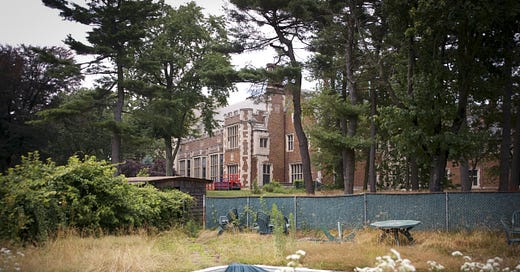Gold Coast Goodbye
As the opulent Gatsby-era homes of Long Island slowly make way for modern developments, a devoted community tries to save one of the most magnificent mansions of all.
“Inisfada” means “Long Island” in Gaelic. But the thirty-three-acre estate and Tudor Elizabethan revival mansion of that name is about as far removed from the Long Island of strip malls and LIE traffic as possible. Nestled in a back corner of North Hills in Nassau County, Inisfada’s grandeur recalls Gatsby-style parties held by debutantes and ambassadors. Once the fourth-largest mansion in America, Inisfada is more reminiscent of a Long Island of the distant past; of the grand houses that dotted the island’s North Shore in the 1920s, leading to its moniker, “the Gold Coast.” Over the last 90-odd years, many of these mansions fell off the map, either crumbling into disrepair or sold and knocked down to make way for more modern homes. Just two years ago, Lands End, the actual mansion that inspired F. Scott Fitzgerald’s The Great Gatsby, was torn down to make room for multi-million-dollar homes.
One of the largest of these historic Gold Coast mansions, Inisfada was…
Keep reading with a 7-day free trial
Subscribe to Narratively to keep reading this post and get 7 days of free access to the full post archives.




